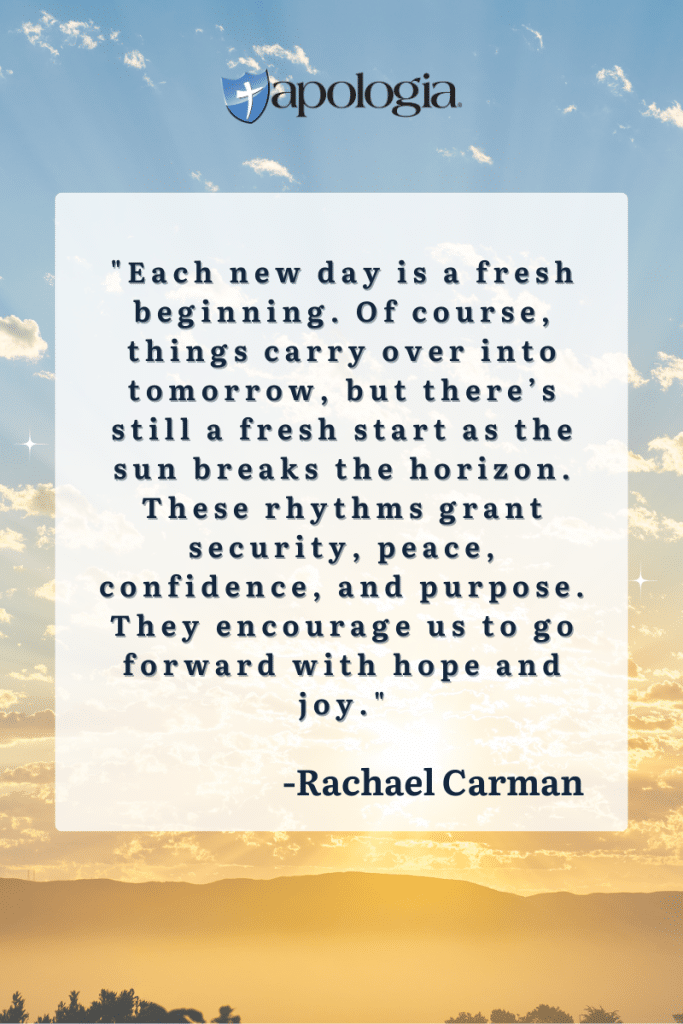
Establishing a Homeschool Rhythm
I need to make something clear: this whole business of creating a manageable schedule has been something I have wrestled with for most of our 25 years of homeschooling. I am pretty sure that says several things about me and scheduling. It surely says it took me a long time to figure out a system that worked for our family.  It says that there were many responsibilities multiplying with each new child we welcomed into the family – more laundry, groceries, meals, sheets, books, and clutter. And that was just the household stuff. There was also more reading, math, experiments and timelines, and spelling lists. Things piled up, and my frustration poured over. It wasn’t pretty. I think the fact that I continued to wrestle and fight for a system says something, too. I kept believing that there had to be a better way, there had to be an easier way, and there had to be a way we could at least get more done, even if we gave up on getting it all done. However, year after year, I would surrender to failure. The schedule I had worked so hard to create and implement was not working, or worse, it wasn’t workable.
It says that there were many responsibilities multiplying with each new child we welcomed into the family – more laundry, groceries, meals, sheets, books, and clutter. And that was just the household stuff. There was also more reading, math, experiments and timelines, and spelling lists. Things piled up, and my frustration poured over. It wasn’t pretty. I think the fact that I continued to wrestle and fight for a system says something, too. I kept believing that there had to be a better way, there had to be an easier way, and there had to be a way we could at least get more done, even if we gave up on getting it all done. However, year after year, I would surrender to failure. The schedule I had worked so hard to create and implement was not working, or worse, it wasn’t workable.
There were many reasons this was true, but two stand out. We consistently failed because: 1) I was trying to do too much, and 2) I was trying to do everything perfectly. Year after year, I was stubbornly optimistic. I thought this would be the year. It didn’t work last time, but this time was different. Surely if I worked the plan hard enough, my system would work this time. All I had to do was do it better. I could fit it all in – I knew I could. I didn’t need to lower my (unreasonable) standards; I just had to try harder. Alas, it was not to be. I came close to giving up altogether. I longed for order, but I’d run out of ideas.
Finally, desperate, I gave in. I wish I could credit someone for the new perspective that changed it all. It is not a new idea. In fact, it goes all the way back to Genesis chapter one. There, in the beginning, when God spoke order into the chaos, that is when it started. God established the original order. Reread it for yourself. He created spaces, then filled them.
Don’t miss it- God set things in order and then gave man and woman the responsibility of maintaining His established order. As a bonus, He gave them a day to rest from it all. God did not establish rushing. He did not establish busyness. He established order and rhythm. That is what I see in God’s created order: a regular, predictable pattern, a cadence, a flow, or a tempo. We see that in the consistency of the sunrise and the sunset; in the seasons of spring, summer, fall, and winter. God is a do-it-again God. I love that. Each new day is a fresh beginning. Of course, things carry over into tomorrow, but there’s still a fresh start as the sun breaks the horizon. These rhythms grant security, peace, confidence, and purpose. They encourage us to go forward with hope and joy.
So, the question is threefold:
- How do we take the example of God’s established order in His creation and apply that to our homes?
- How do we determine what we really need to focus on getting done?
- How do we lay aside and let go of those things that we do not need to be doing?
I humbly suggest that the first step in answering these questions is to spend some time in prayer, seeking God. Moms, ask Him to give you eyes to see those things that need your attention during this particular season as a wife, mother, homeschool teacher, and home keeper. I encourage you not to rush this process. Take some time to pray, journal, and listen to Him. Dads, pray for the Lord to guide your wife in this and support His guidance of your family’s schedule.
In short, I have adopted weekly rhythms and daily “times.”
The weekly rhythm goes something like this:
• Sunday: Church, rest, step away from to-do lists and devices
• Monday: Laundry day, school day
• Tuesday: School day
• Wednesday: Out day – run as many errands as possible, including grocery shopping
• Thursday: School day
• Friday: School day, wash and dry the sheets and refresh the beds
• Saturday: Family time, house projects, and preparing for church
Other responsibilities were distributed throughout the week to the children as I trained them in various household chores. They had responsibilities for each day.
Our daily rhythm was undergirded by six “times” that we prioritized:
• Worship Time: Family Worship is the time that sets the tone for each day. It helps to get everyone focused on God and His glory.
• Responsibility Time: This included chores and school work.
• Meal Time: Family Meals are an underrated time that can create an amazing family culture. Coming together around meals ought to be guarded for conversation, discipleship, and sharing.
• Reading Time: This could be done together or alone. We emphasized reading together when they were younger but continued even through high school.
• Rest Time: This was a daily nap time in the seasons where I could get away with it. In other seasons, it was just time alone or quiet time with books but no devices or electronics.
• Outside Time: This is vital. Kids need to be out in God’s creation, wowed by His handiwork. They need to fall, stub their toes, and skin their knees. They need to catch critters and listen to the birds. Don’t skip this one. Motherhood is all about rinse and repeat. Our roles require that we do some things repeatedly – dishes, cooking, sweeping, flushing, cleaning, and washing. Unfortunately, we’ve come to believe the enemy’s lie that motherhood is meaningless and mundane – that none of it matters – that it is pointless – that anyone else can do it, or that it does not need to be me or you. You might think that you could more effectively and efficiently contribute to society in ways other than folding another load of laundry, cooking another pot of soup, going to another soccer game, or bandaging another booboo.
There is nothing meaningless in the everyday responsibilities of a mom. It all matters. It is all about leaning into it, trusting God with it, and knowing that the rinse and repeat cycle is precisely what He does each morning when He cues the sunrise and sets the ocean’s limit. There is tremendous power in doing things over and over. Habitual rhythms transform us; they change us; they make us and mold us. Good rhythms help us to rightly order our time and our love toward the things of God. Bad rhythms cause the opposite. They contribute to confusion and disorder in our hearts, minds, and souls.
As our children launch, what can we leave with them? What do we hope they remember when they’re alone in their dorm rooms? I hope they remember the rhythms, the family worship, the reading times, the rest days, the responsibilities, the importance of working diligently, and the value of being outside.


